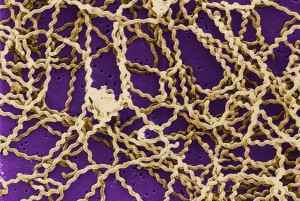The Hong Kong Centre for Health Protection (CHP) of the Department of Health (DH) has recently reported two imported cases of the bacterial disease, leptospirosis in Oct. 2016.

The first case was recorded on October 14 affecting a 21-year-old female tourist with unremarkable past health. She presented with fever, headache, malaise, runny nose and skin rash on September 15. She was admitted to a public hospital on September 26. Blood test showed deranged renal function. She was treated with antibiotics and was stable all along. She was discharged on September 29. Paired sera on September 26 and 28 showed four-fold rise in antibody titre against Leptospira by microscopic agglutination test (MAT). The patient had travelled to Thailand and Laos and had history of hiking with fresh water exposure there during the incubation period.
The second case was recorded on October 19 affecting a 22-year-old woman with good past health. She presented with upper respiratory tract symptoms on September 15 then developed fever, headache, dizziness, muscle pain and arthralgia on September 19. She was admitted to a public hospital on September 24. The patient later developed deranged liver function, disseminated intravascular coagulopathy, acute renal failure and septic shock requiring intensive care. Her condition improved gradually and she was discharged on September 30. Paired sera collected on September 25 and October 14 showed four-fold rise of antibody titre against Leptospira by MAT. Investigations revealed that the patient had travelled to Chiang Mai of Thailand with friends from September 6 to September 11 where she had participated in fresh water rafting. Her three travel collaterals reported fever and influenza-like symptoms after the trip and all recovered with symptomatic treatment. Her family members remained asymptomatic.
Leptospirosis is caused by a corkscrew-shaped bacterium called Leptospira interrogans, is often referred to as “rat fever” due to the principal role rats play in spreading the disease (scientists refer this type of animal as a reservoir host). Other animals can also be important reservoirs of the disease.
These animals can spread the disease in their urine, contaminating water, soil, or food. People who live in close contact with domestic animals or wildlife are at higher risk for getting the disease.
People become infected by coming into contact with contaminated urine, water, food, or soil through breaks in the skin, eyes, mouth, or nose. Outbreaks of leptospirosis are usually caused by exposure to contaminated water, such as floodwaters. Person to person transmission is rare. Infected individuals initially experience fever, severe headache and muscle aches, abdominal pain, and occasionally a skin rash. Patients in the later stages of disease can suffer from jaundice, kidney failure, bleeding from the mouth or nose, bloody urine and can be fatal, especially without proper treatment.
Related:
- Zika infection causes reduced fertility, low testosterone in male mice
- Podcast: The Crisis in Venezuela
- Zika cases triple in Ho Chi Minh City


2 thoughts on “Hong Kong reports two imported leptospirosis cases linked to travel to Thailand”